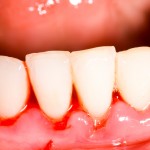
Diode-lasers have been used for soft-tissue applications such as incision, haemostasis, and coagulation so are considered to have potential for the treatment of periodontal disease. The aim of this review was to assess the adjunctive effect of a diode laser following non-surgical periodontal debridement (SRP) during the initial phase of periodontal therapy on the clinical parameters of periodontal inflammation.
Searches were conducted in the Medline-PubMed, Cochrane-CENTRAL and Embase databases for randomised controlled trials (RCTs) using thermal diode laser as adjunct to non-surgical conventional periodontal initial therapy conducted in patients ≥18year sold written in English or Dutch. Two reviewers screened, selected, quality assessed and abstracted data independently. The main outcome variable were probing pocket depth (PPD) and clinical attachment loss (CAL), but plaque scores (PS), bleeding scores (BS) and the Gingival Index (GI) were also considered.
- 9 studies (247 patients) were included (7 -split-mouth design. 2 parallel groups).
- There was considerable heterogeneity in study design, and evaluation period ranged from 6 weeks to 6 months.
- Only 3 of the studies reported on adverse effects indicated that there were none.
- Meta-analysis found no significant effect on PPD, CAL and PS, However ,there was for GI and BS there was a significant effect favouring adjunctive use of the diode laser.
The authors concluded
The collective evidence regarding adjunctive use of the diode laser with SRP indicates that the combined treatment provides an effect comparable to that of SRP alone. With respect to BS the results showed a small but significant effect favouring the diode laser, however, the clinical relevance of this difference is remains a question. This systematic review questions the adjunctive use of diode laser with traditional mechanical modalities of periodontal therapy in patients with periodontitis. The strength of the recommendation for the adjunctive use of the diode laser is considered to be ‘moderate’ for changes in PPD and CAL.
Comment
The authors methodological approach to this review follows accepted guidelines. However, only a small number of trials were identified and these were conducted on a small number of patients over a short time frame. The majority of the included studies use a split mouth design and the potential for carry-over effects is discussed by the authors who consider that ’leaking’ is unlikely, although they did perform a subgroup meta-analysis. The heterogeneity of the studies is an issue that is discussed with variation in both the type and wavelength of the lasers used and well as the study populations being highlighted. The authors also discuss previous reviews that have looked more broadly at use of lasers for patients with periodontal problems some of these we have highlighted previously (see links).
Links
Slot DE, Jorritsma KH, Cobb CM, Van der Weijden GA. The effect of the thermal diode laser (wavelength 808-980nm) in non- surgical periodontal therapy: a systematic review and meta-analysis. J Clin Periodontol. 2014 Jan 26. doi: 10.1111/jcpe.12233. [Epub ahead of print] PubMed PMID: 24460795.

[…] Dental Elf – 15th May -2014 – Review finds limited evidence for adjunctive use of the diode … […]